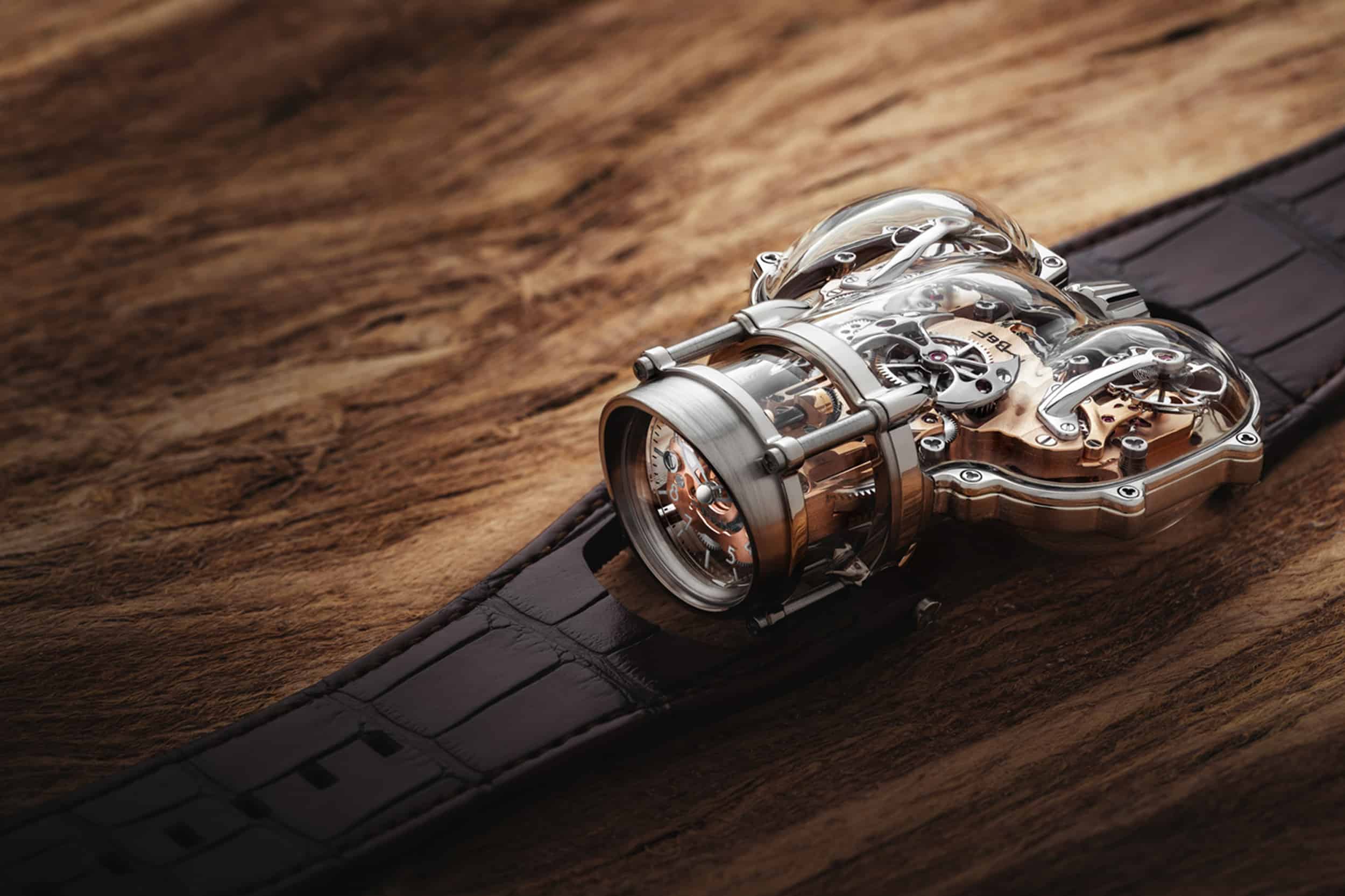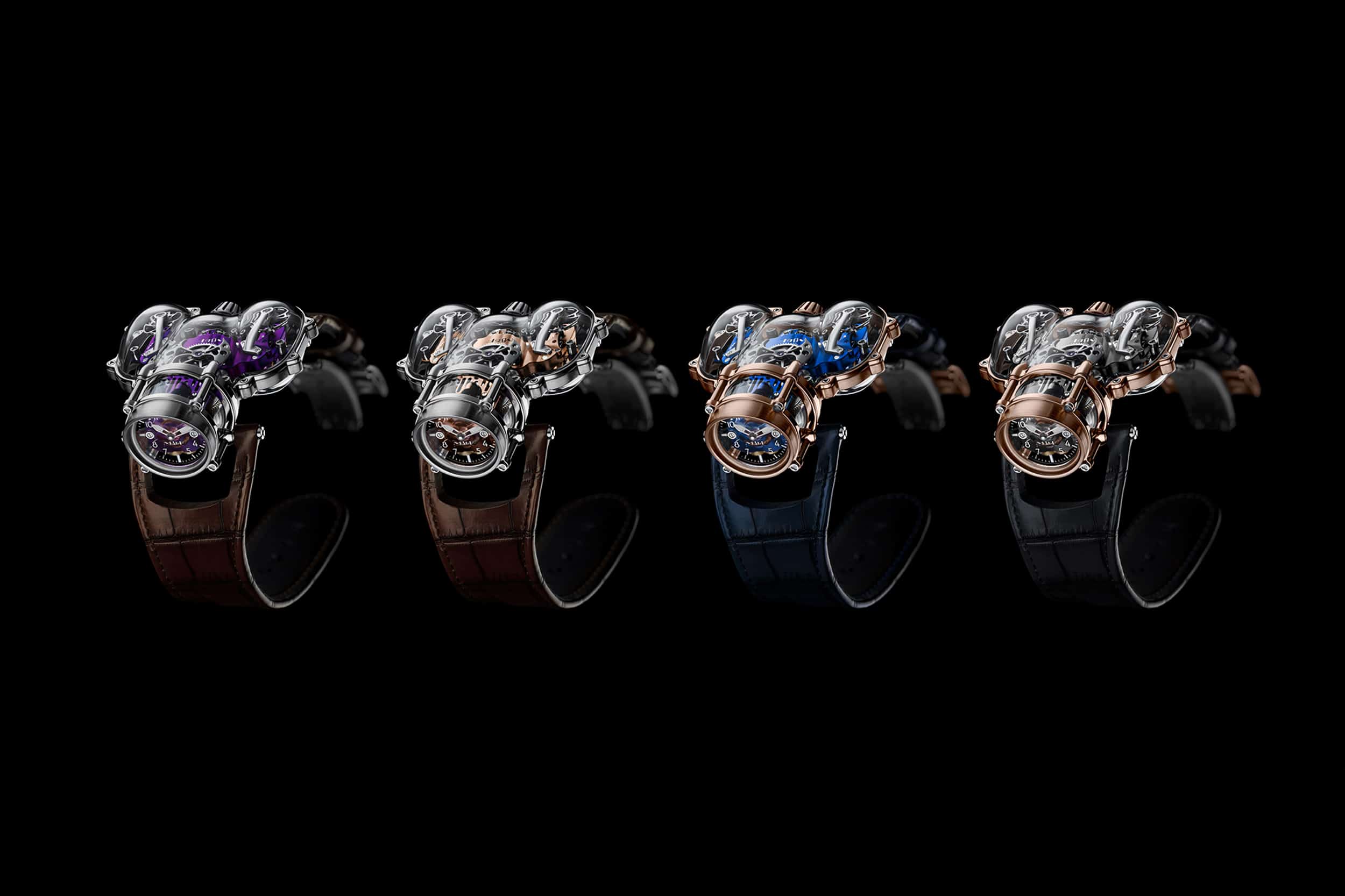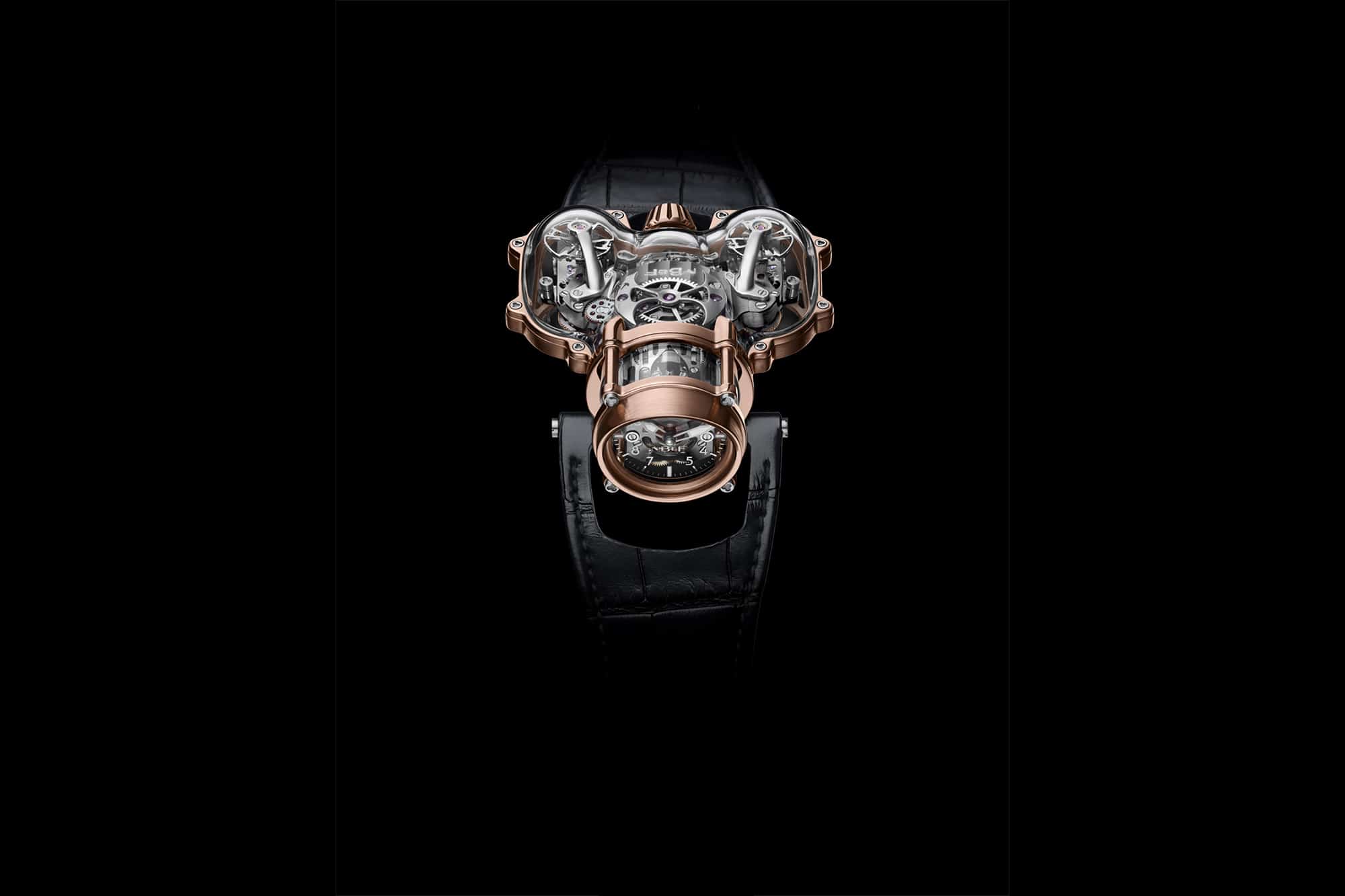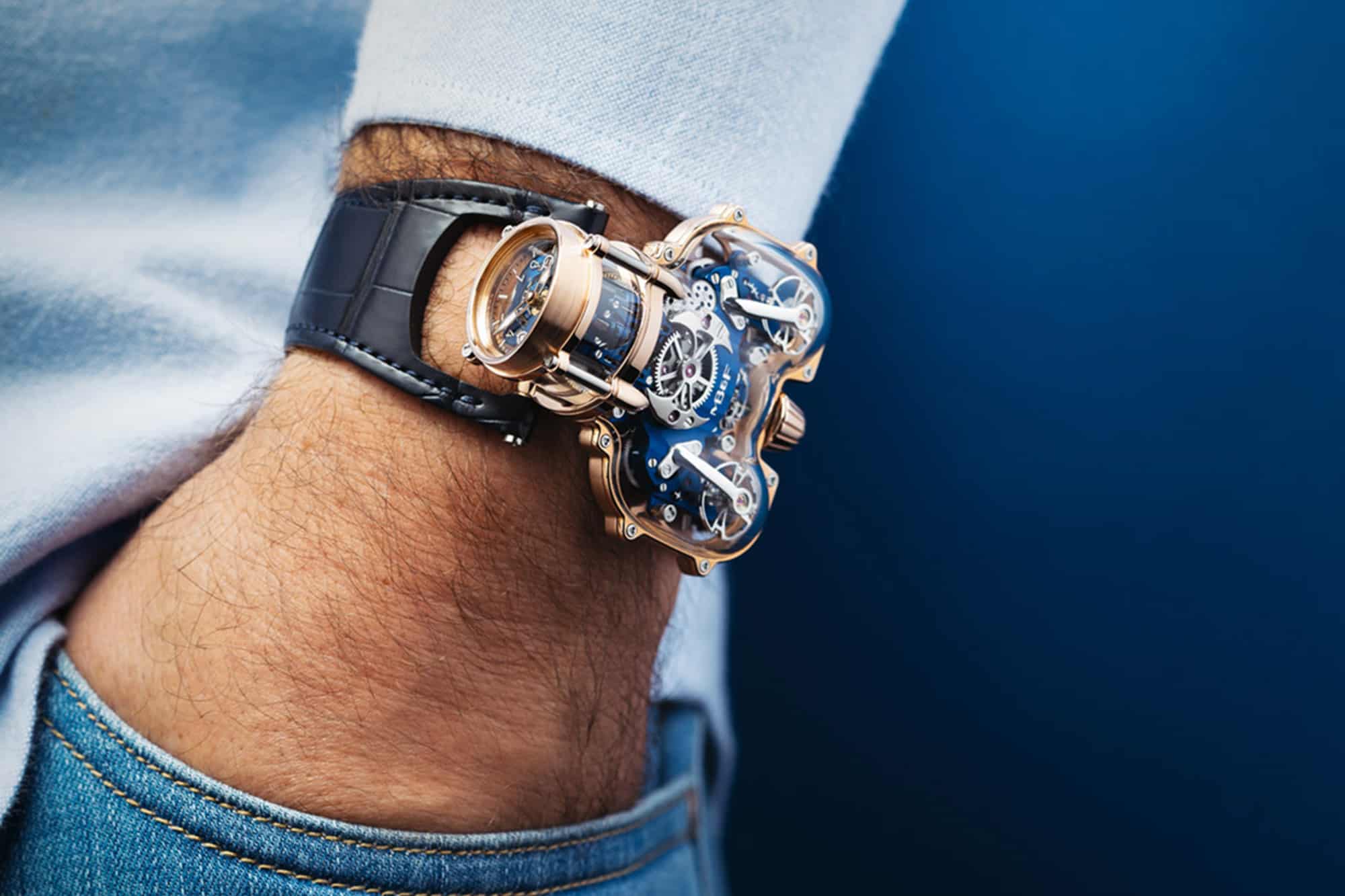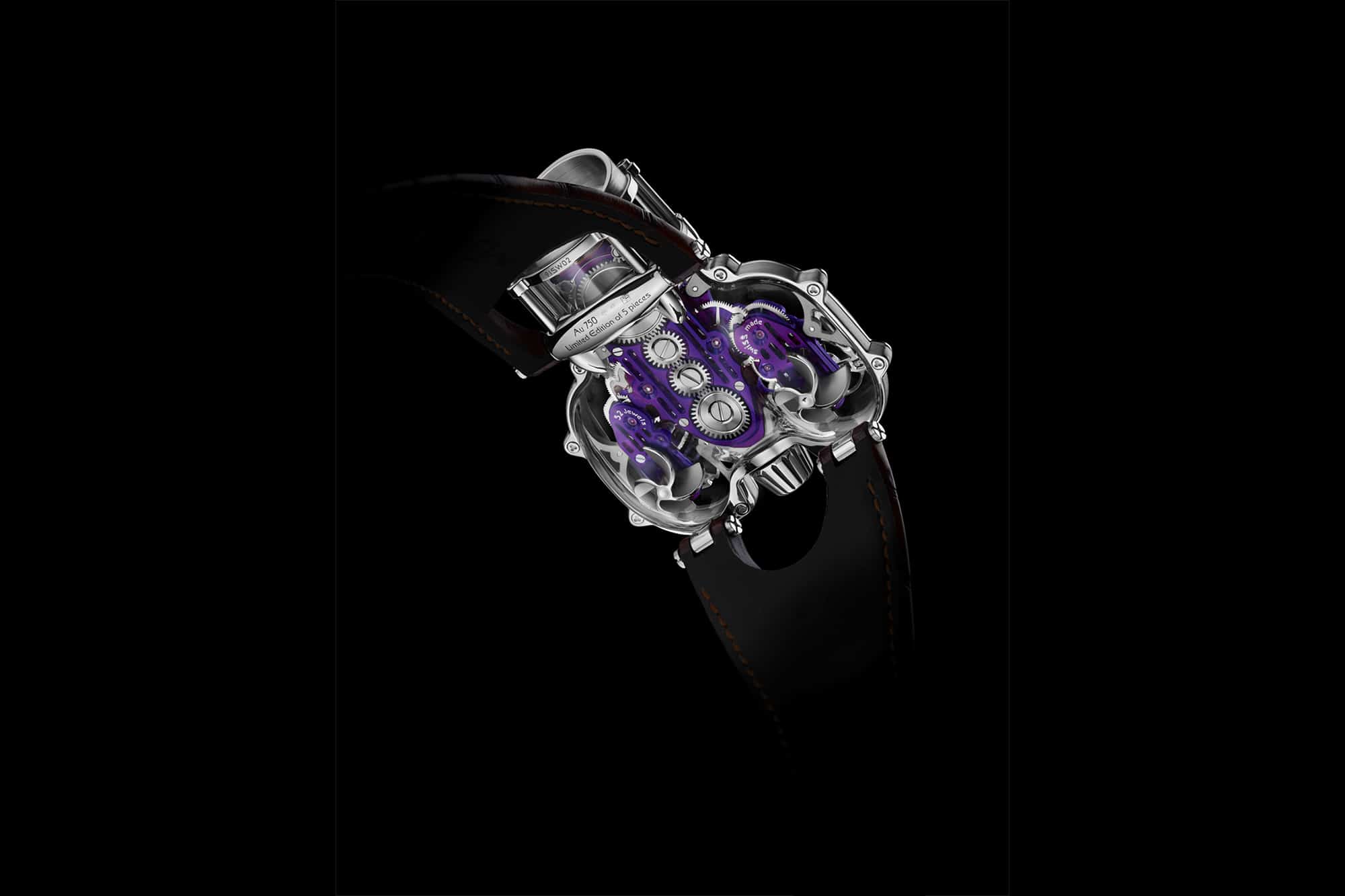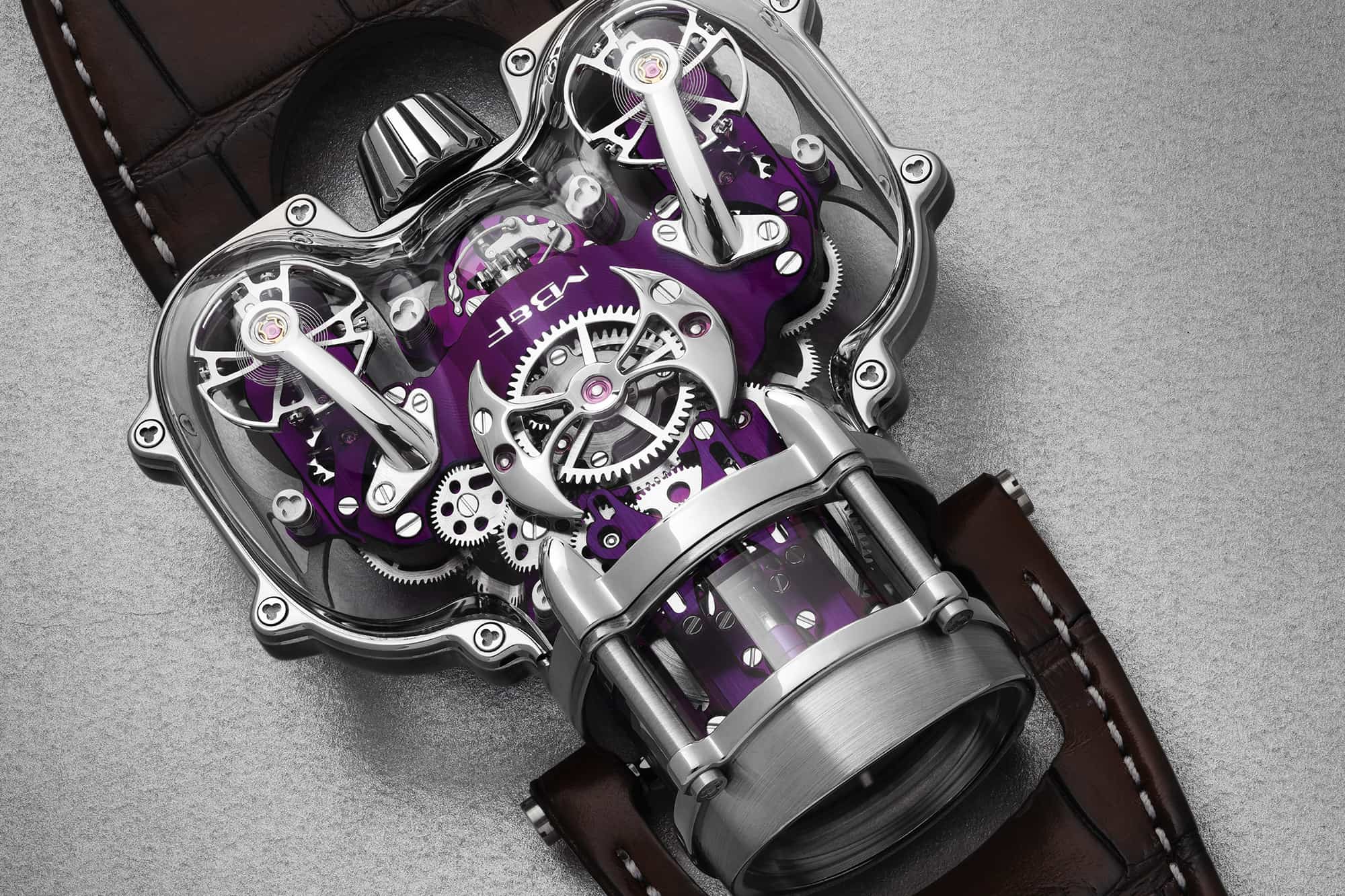Last week MB&F dropped their latest entry in the ongoing Horological Machine series, the HM9 SV. SV, in this case, stands for “Sapphire Vision,” and it’s a fairly on the nose designation as the case is made of, well, sapphire. And you can see right through it, as one does with glass. If you’re a longtime Worn & Wound reader (thank you, by the way) you might be asking yourself why in the world we’re starting off the week talking about this strange glass watch that looks kind of like a rocket ship. That’s a fair question. Let me attempt to explain.
Pure Imagination: The MB&F Horological Machine No. 9 – “Sapphire Vision”
First, we should acknowledge a few things that are very obviously true right off the bat. The HM9 SV is not accessible, affordable, practical, or even conventionally attractive as a watch. I don’t think you should buy one. It costs $440,000, and there are so many alternative ways to spend that kind of money if you’re lucky enough to have it. Have you seen, for example, the size of the house you can buy in a place like Austin, TX for half a million dollars? If real estate isn’t your thing, you can have your pick of some of the best cars on the planet for that money from the likes of Rolls Royce, McLaren, Aston Martin, and many more. A place to live and a vehicle of some kind are indisputably more practical than an avant-garde wrist watch made of glass. If you have $440,000 burning a hole in your pocket, there are more sensible ways to blow it, even if you’re looking to make an extravagant flex.
This is a piece of mechanical art, and I think we should consider it in the same way we would a painting by a great artist. You can, of course, appreciate a Picasso painting or a Rodin sculpture without striving to own one. We, being everyday people who enjoy art, culture, and history, don’t talk about these things in terms of, “Should I allocate my disposable income to this?” We enjoy them in museums, appreciate them when photographed, and learn about the people behind them, always fostering a deeper appreciation for their methods, and the ideas they are attempting to communicate through their work. The HM9 SV and timepieces like it are simply the equivalent of fine art in the watch world.
That doesn’t mean, however, that there aren’t people who will, perhaps against their better judgment, buy one of these things. And that’s important as well, because just like the art world, the horological landscape is advanced when people patronize makers of the highest of the high end. It means that adventurous, independent watchmaking can continue. If you love watches, I think you’ll agree that we’re better off in a world where people like Roger Smith, Kari Voutilainen, Max Busser and his many friends, and others can create freely, without any obvious restrictions or boundaries. It would be easy to say that the fact that these things exist at all, and that we can learn about them, study them, and enjoy them from afar, is a miracle. But it’s really not – it’s a function of a relatively small number of deeply invested watch lovers being willing to support the endeavors of these wildly creative people.
So, just for fun, let’s consider what MB&F have created here. The HM9, nicknamed “Flow,” has been around since 2018 and is inspired largely by the streamlined curves of midcentury car and aircraft design. The layout here is that of a driver’s watch, as time is read through an aperture mounted on the bottom of the case, if you’re looking at it as you would a traditional wristwatch. From the top, twin balance wheels are on display, but with a hand on the steering wheel the dial comes clearly into view.
The big innovation of the HM9 SV is the sapphire case, which lets you see not just those twin balance wheels from the top down, but gives you an unobstructed view of the whole movement, which is quite impressive. Those balance wheels use what MB&F refers to as a “planetary differential” to combine the impulses of both balances into one. That power is then fed through a mechanical going train that’s arranged laterally, and clearly visible through the underside of the watch. From the bottom you can also see a pair of small propellers meant to evoke a twin turbine engine. These spin freely and for no reason other than that of bringing a smile to your face, because that’s kind of what MB&F is all about.
According to MB&F, it takes around 350 hours to create the sapphire crystals used for each of these watches in the SV series, which I’m guessing is why only 20 will be made. Each watch uses five crystals in total, and not one of them is standard in any way – they feature dramatic curvatures and angles that are incredibly difficult to manufacture. This is a theme throughout MB&F’s whimsical Horological Machine line, and this edition might be the most technically challenging to make in terms of crystal design. Of note, in order to maintain a water resistance rating of 30 meters, a special three dimensional gasket patented by MB&F has to be used on the three part HM9 case. For these sapphire editions, the sapphire crystals themselves are fused to the metallic frame using a high tech bonding compound and a vacuum with application at extremely high temperatures. The result is a glass case with virtually invisible seams between the custom sapphire and 18 karat gold frame.
Aesthetically, the HM9 simply does not look like a watch. This is not a wrist accessory that would blend into any situation – it’s a focal point and conversation starter in almost any scenario, save an MB&F collector’s event, where I imagine you’d be discussing the watch anyway. As a watch guy whose taste does tend to run toward the somewhat unusual, I have a hard time imagining the confidence it would take to wear this out and about in mixed company. It makes my own most unusual watch look fairly normal, even a little boring. But pushing the envelope is very much the point of the HM9, and every watch that MB&F makes. These watches are pure imagination, and a fascinating window into what’s possible in watch design.
So, there’s plenty of real watchmaking and materials science happening in the HM9 SV that makes it a worthwhile technical achievement. But a watch like this is really worth examining and discussing as a concept. As a product, the watch is a little absurd, but I for one believe that we’re better off in a watch climate where something like this can be dreamed up and actually made. Not every watch needs to be considered in terms of “Should I buy it?” or even “Is it worth the money?” For watch enthusiasts, there’s a certain pleasure simply in knowing the HM9 SV exists. MB&F









 Featured Videos
Featured Videos




